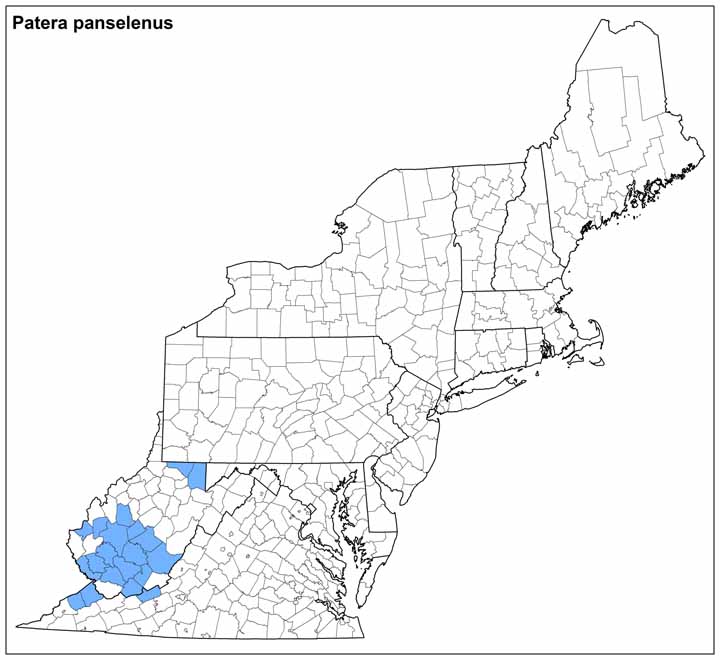Land Snails
.jpg)

Photo(s): Views of a Patera panselenus shell © Ken Hotopp.
Click photo(s) to enlarge.
Patera panselenus (Hubricht, 1976)
Family: Polygyridae
Common name: Virginia Bladetooth
Identification
Width: 17 - 21 mm
Height: 8.0 - 9.5 mm
Whorls: 5+
The depressed shell of Patera panselenus is usually a cryptic grey or brownish color. Rounded, radial ribs cover the shell, more weakly on the inner whorls. These ribs are intersected by regularly-spaced spiral lirae. The oval aperture is constricted behind the white, reflected lip. A single, curved tooth is found on the parietal wall and the basal lip bears a slight lamina. The umbilicus is closed.
Ecology
This snail lives on steep slopes and along small runs in mature forest, and is strongly associated with rock outcrops and talus (Hotopp, 2006). It is an expert climber of rock surfaces, and may be found adhered high upon rock faces or beneath overhangs when aestivating during summer dry spells. Patera panselenus may be found among sandstone, shale, and limestone, and colonies of a dozen or more scattered individuals have been observed in northern West Virginia.
Taxonomy
Patera panselenus has also been known as Mesodon panselenus.
Distribution
Patera panselenus is a southern Appalachian Mountain endemic. Though it may be common where it occurs, the range of P. panselenus is concentrated in 22 counties mainly in southern West Virginia and nearby Virginia and Kentucky. It is reported from Buchanan, Dickenson, and Wise Counties in Virginia (Hubricht, 1985). Virginia specimens of Patera perigrapta, a more southerly species, are probably P. panselenus.
Conservation
NatureServe Global Rank: G3
NatureServe State Rank: S2
Virginia’s wildlife action plan: Tier III
Ken Hotopp, Meegan Winslow 11/2012
Range Map (click to enlarge)


